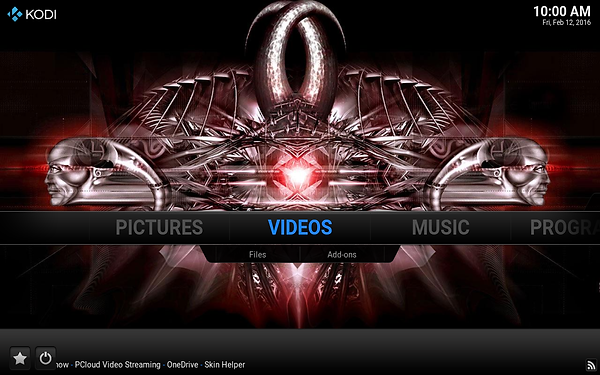
What is Kodi?
Kodi (formerly XBMC) is a free and open-source media player software application developed by the XBMC Foundation, a non-profit technology consortium.[3] Kodi is available for multiple operating systems and hardware platforms, with a software 10-foot user interfacefor use with televisions and remote controls. It allows users to play and view most streaming media, such as videos, music, podcasts, and videos from the internet, as well as all common digital media files from local and network storage media.
It is a popular multi-platform alternative to Windows Media Center for HTPC (home theater PC) use. Kodi is highly customizable: a variety of skins can change its appearance, and various plug-ins allow users to access streaming media content via online services such as Amazon Prime Instant Video, Crackle, Pandora Internet Radio, Rhapsody Spotify, and YouTube. The later versions also have PVR (personal video recorder) graphical front end for receiving live television with electronic program guide (EPG) and high-definition digital video recorder (DVR) support.
The software was originally produced as an independently developed (homebrew) media player application named Xbox Media Center(abbreviated as XBMC) for the first-generation Xbox game console, and was later made available under the name Kodi (formerlyXBMC) as a native application for Android, Linux, BSD, Mac OS X, iOS, and Microsoft Windows based operating systems. It is also available as a standalone version referred to as Kodibuntu.
Because of its open source and cross-platform nature, with its core code written in C++ (ANSI standard), modified versions of Kodi/XBMC together with a JeOS have been used as a software appliance suite or software framework in a variety of devices including smart TVs,set-top boxes, digital signage, hotel television systems, network connected media players and embedded systems based on armhfplatform like Raspberry Pi. Derivative applications such as MediaPortal, Plex, ToFu, Voddler, and Horizon TV have all initially been spun off from XBMC

What does it do?
Designed to run on computers and home servers connected to larger TVs, Kodi pulls content directly to your front room. However, recent community-led products mean it’s now possible to run the software on smartphones, tablets and android tv boxes.
What can it play?
Kodi essentially turns any computer, smartphone or tablet into a digital set-top box or streamer, giving users the ability to stream files from the internet, a home network and local storage.
Unlike other TV streamers such as the new Apple TV, Chromecast 2 and Amazon Fire TV Stick, Kodi isn’t held back by licensing or a curated app store, so it lets you download a range of community-made apps, and watch whatever you like.
What’s more, Kodi’s purpose-built UI makes browsing through your content simple. The software features what its developers call a “10-foot UI”, meaning it can be read from a theoretical distance of up to 10ft away – and thanks to a range of built-in codes, users can browse videos, photos and podcasts quickly and easily.
On smaller devices, Kodi offers a similar experience, but can be hooked up to a larger TV for big-screen viewing.
What’s compatible?
Kodi is available on almost every device you can think of. The mediacentre software is easy to download, and compatible with OS X, Linux, Windows, Android – and even the Raspberry Pi microcomputer. For those using iOS, the process is slightly more complicated: iPhone users will need to make sure their phone is jailbroken before downloading it.
How to install it?




